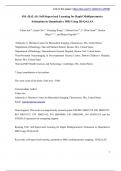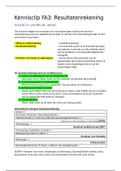Link to the paper: https://doi.org/10.1002/mrm.29786
SSL-QALAS: Self-Supervised Learning for Rapid Multiparameter
Estimation in Quantitative MRI Using 3D-QALAS
Yohan Jun1,2, Jaejin Cho1,2, Xiaoqing Wang1,2, Michael Gee2,3, P. Ellen Grant2,4, Berkin
Bilgic1,2,5,*, and Borjan Gagoski2,4,*
1
Athinoula A. Martinos Center for Biomedical Imaging, Charlestown, MA, United States
2
Department of Radiology, Harvard Medical School, Boston, MA, United States
3
Department of Radiology, Massachusetts General Hospital, Boston, MA, United States
4
Fetal-Neonatal Neuroimaging & Developmental Science Center, Boston Children’s Hospital,
Boston, MA, United States
5
Harvard/MIT Health Sciences and Technology, Cambridge, MA, United States
* Equal contribution as last authors
The word count of the body of the text: ~3500
Corresponding Author
Yohan Jun
Athinoula A. Martinos Center for Biomedical Imaging, Charlestown, MA, United States
Email: yjun@mgh.harvard.edu
Grant Support: This work was supported by research grants NIH R01 EB032378, R01 EB028797,
R03 EB031175, U01 EB025162, P41 EB030006, U01 EB026996, U01 DA055353 and the
NVIDIA Corporation for computing support.
Running Title: Self-Supervised Learning for Rapid Multiparametric Estimation in Quantitative
MRI Using 3D-QALAS
Keywords: self-supervised learning, quantitative MRI, multiparametric mapping, 3D-QALAS
1
,Abstract
Purpose: To develop and evaluate a method for rapid estimation of multiparametric T1, T2, proton
density (PD), and inversion efficiency (IE) maps from 3D-quantification using an interleaved
Look-Locker acquisition sequence with T2 preparation pulse (3D-QALAS) measurements using
self-supervised learning (SSL) without the need for an external dictionary.
Methods: A SSL-based QALAS mapping method (SSL-QALAS) was developed for rapid and
dictionary-free estimation of multiparametric maps from 3D-QALAS measurements. The
accuracy of the reconstructed quantitative maps using dictionary matching and SSL-QALAS was
evaluated by comparing the estimated T1 and T2 values with those obtained from the reference
methods on an ISMRM/NIST phantom. The SSL-QALAS and the dictionary matching methods
were also compared in vivo, and generalizability was evaluated by comparing the scan-specific,
pre-trained, and transfer learning models.
Results: Phantom experiments showed that both the dictionary matching and SSL-QALAS
methods produced T1 and T2 estimates that had a strong linear agreement with the reference values
in the ISMRM/NIST phantom. Further, SSL-QALAS showed similar performance with dictionary
matching in reconstructing the T1, T2, PD, and IE maps on in vivo data. Rapid reconstruction of
multiparametric maps was enabled by inferring the data using a pre-trained SSL-QALAS model
within 10 s. Fast scan-specific tuning was also demonstrated by fine-tuning the pre-trained model
with the target subject’s data within 15 min.
Conclusion: The proposed SSL-QALAS method enabled rapid reconstruction of multiparametric
maps from 3D-QALAS measurements without an external dictionary or labeled ground-truth
training data.
Keywords: self-supervised learning, quantitative MRI, multiparametric mapping, 3D-QALAS
2
,INTRODUCTION
Quantitative MRI (qMRI) provides quantitative tissue information, including T1, T2, T2* relaxation
rates, and proton density (PD) estimates, which can be used for tissue analysis to help improve
clinical diagnosis (1–11) in diseases such as brain tumors and multiple sclerosis. In addition, such
information also finds applications in neuroscientific imaging, including aging research (9,12–18).
Quantitative information can be obtained using sequences including DESPOT1, DESPOT2,
MP2RAGE, and MPnRAGE, which acquire a single quantitative magnetic resonance (MR)
parameter map from the measurements (19–21). Recently, various MRI methods that have been
developed are capable of acquiring multiple quantitative MR parameter maps at high resolution
within a reasonable timeframe, including magnetic resonance fingerprinting (MRF) (22), echo
planar time-resolved imaging (EPTI) (23), and MR multitasking (24). 3D MRF, which obtains T1,
T2, and PD maps using a tailored acquisition scheme with a spiral k-space trajectories, showed
high repeatability and reproducibility of multiparametric maps in whole-brain imaging at 1.125
mm isotropic resolution within 10 min (25,26). 3D EPTI combines an inversion-recovery gradient-
echo (IR-GE) and variable flip angle (VFA) gradient and spin echo (GRASE) acquisition schemes
and integrates them with controlled aliasing in parallel imaging (CAIPI), enabling whole-brain T1,
T2, T2*, PD, and B1+ maps at 1 mm isotropic resolution within 3 min (23). MR multitasking using
T2-prepared inversion-recovery and multi-echo gradient-echo (mGRE) readouts enabled whole-
brain 3D acquisition of T1, T2, and T2* maps at 0.7 × 1.4 × 2 mm3 resolution within 9.1 min (27).
Recently, 3D-quantification using an interleaved Look-Locker acquisition sequence with
T2 preparation pulse (3D-QALAS) has been developed for acquiring high-resolution T1, T2, and
PD maps from five measurements within each repetition time (TR) (28–30). The original 3D
QALAS was proposed for acquiring rapid T1 and T2 maps in cardiac imaging (28,31,32). It has
been applied to neuroimaging (29,30,33), enabling whole-brain T1, T2, and PD maps at 1 mm
isotropic resolution within 11 min of acquisition time. Recent studies evaluating 3D-QALAS
showed reliable scan-rescan repeatability for measuring cortical thickness and subcortical brain
volumes, as well as high repeatability of the estimated T1, T2, and PD values (29,30). These maps
can be further utilized to synthesize multiple contrast weighted volumes used in clinical settings,
such as T1-weighted (T1w), T2-weighted (T2w), fluid-attenuated inversion-recovery (FLAIR),
phase-sensitive inversion recovery (PSIR), and double inversion recovery (DIR), which also can
help evaluate multiple sclerosis lesions (14).
3
, There have been efforts to reduce the scan time of QALAS using compressed sensing
(CS), which enabled an additional 2-fold acceleration of “conventional” QALAS (acquired at R =
2 using parallel imaging), while maintaining equivalent quantitative values of obtained maps and
similar image quality of synthesized images (33,34). Recent efforts have also employed wave-
controlled aliasing in parallel imaging (Wave-CAIPI) (35,36) to accelerate the QALAS scan by 6-
fold using corkscrew k-space trajectories and generalized parallel imaging reconstruction. This
acquisition was further combined with model-based deep learning reconstruction to push the
acceleration to 12-fold (37).
While those methods could reduce the image acquisition time by reconstructing the multi-
contrast images of QALAS from undersampled k-space data, an additional fitting process is still
needed to generate quantitative maps, which requires additional computation time. Bloch-
simulation-based dictionary matching is one way to generate the quantitative maps; however, it
requires an external dictionary that needs to be pre-calculated, and it requires a long computation
time to perform the voxel-by-voxel fitting, especially for high-resolution images, which might
hinder online reconstruction. A similar problem is faced in MRF, where advanced computational
algorithms for dictionary generation or signal matching were presented, such as using GPU
acceleration (38), fast group matching (39), and dimensionality reduction of dictionaries using a
low-rank approximation (40) and singular value decomposition (SVD) (41).
Along with the recent rapid growth of deep-learning-based algorithms, many studies have
exploited those methods for MRI applications (42–49). For example, 3DMRF-DL, which
combined parallel imaging and deep learning, demonstrated that high-resolution whole-brain T1
and T2 maps could be acquired at 1 mm isotropic resolution within 7 min (48). Further, MANTIS,
a model-augmented neural network with incoherent k-space sampling, showed rapid T2 mapping
using a multi-echo spin-echo (ME-SE) sequence which was accelerated up to 8-fold (49). While
the deep-learning-based models, which were trained in a supervised way, outperformed
conventional algorithms in numerous applications, there are various cases where ground-truth or
label images are challenging to be defined or acquired. In the case of quantitative mapping, the
acquisition of in vivo gold standard quantitative maps at high resolution may be infeasible using
conventional scans such as inversion-recovery spin-echo (IR-SE) or fast-spin-echo (IR-FSE) for
T1, and single-echo spin-echo (SE-SE) or fast-spin-echo (SE-FSE) for T2 maps, as these often
suffer from prohibitively long scan times.
4






